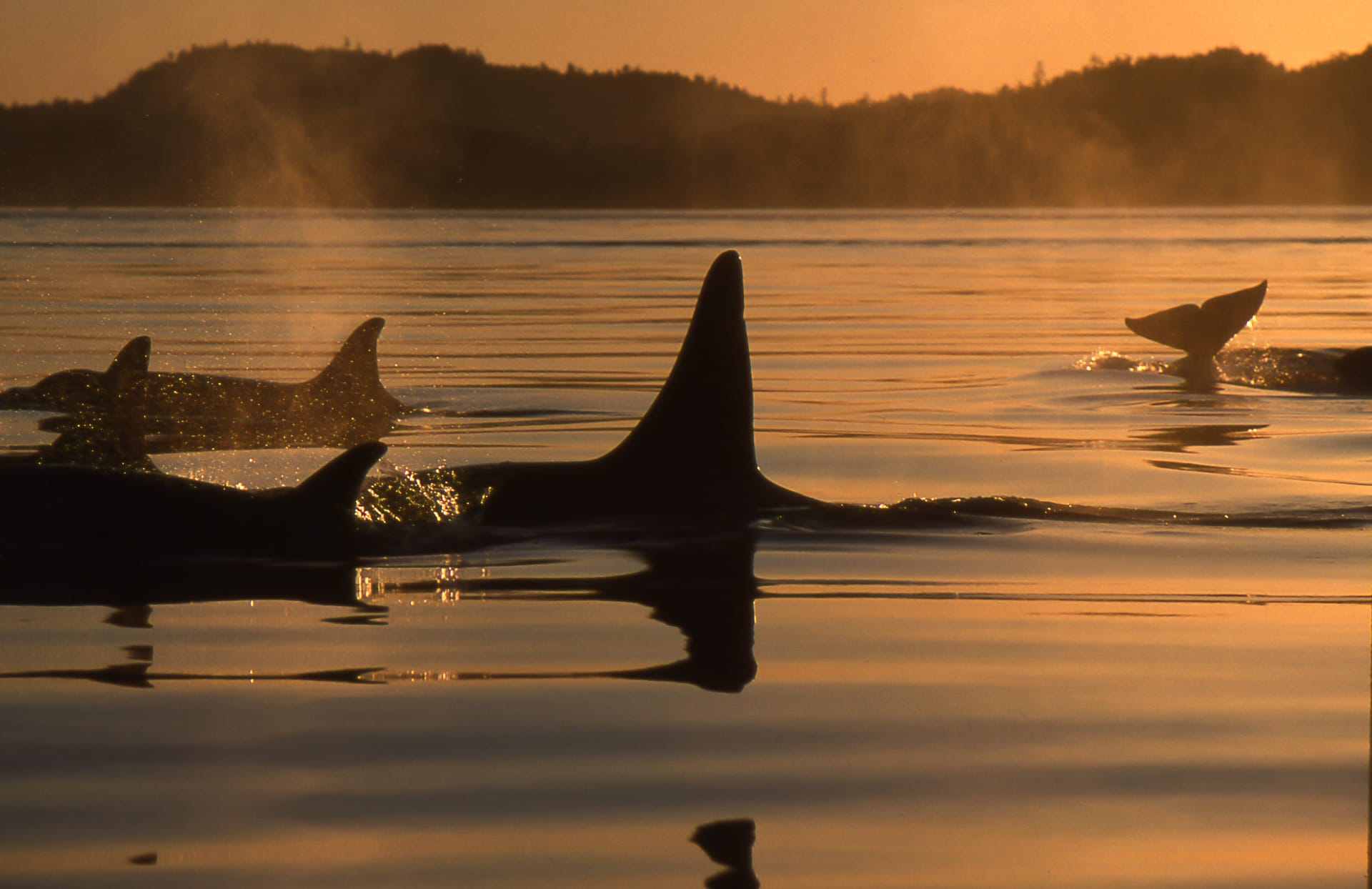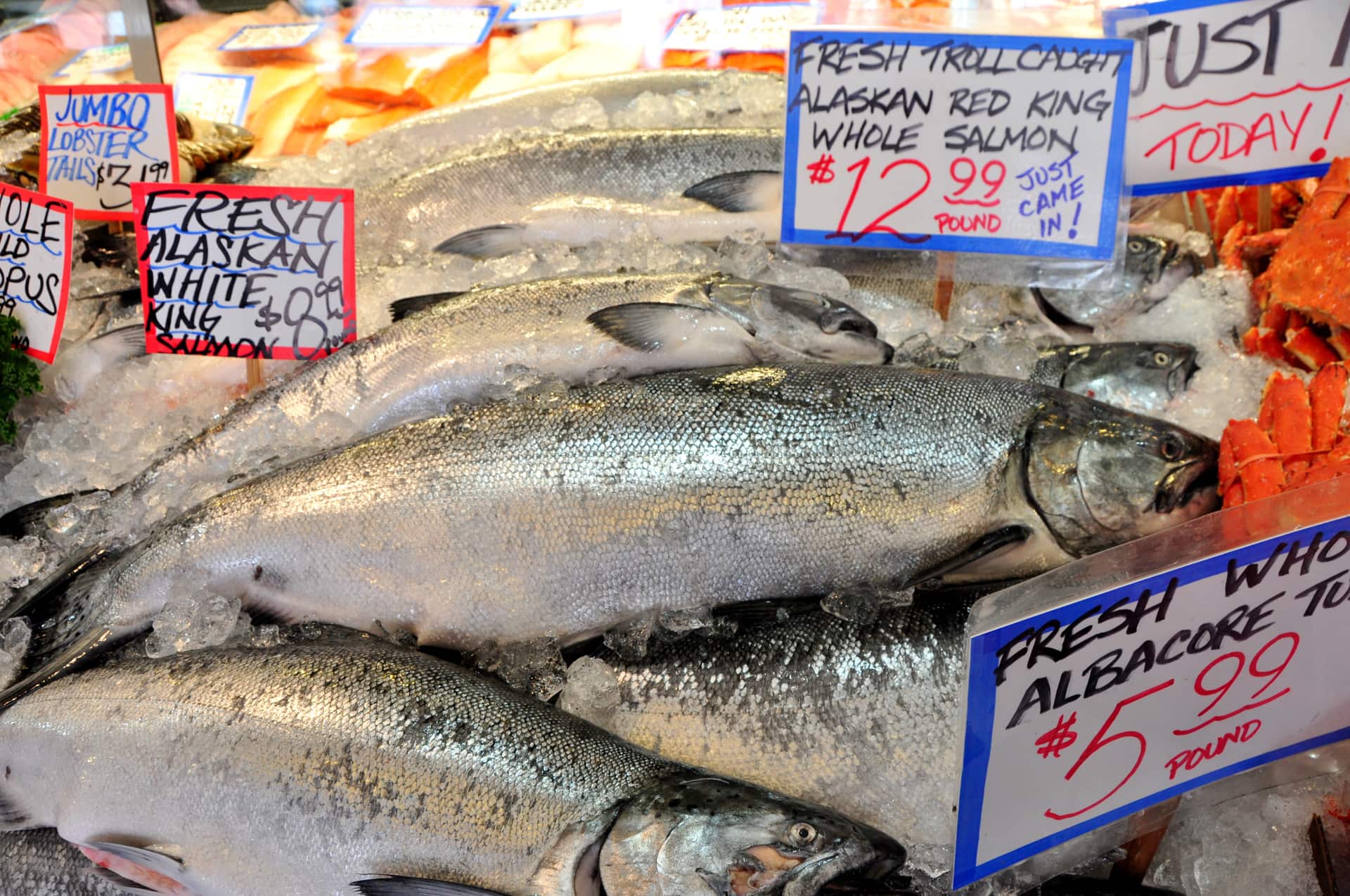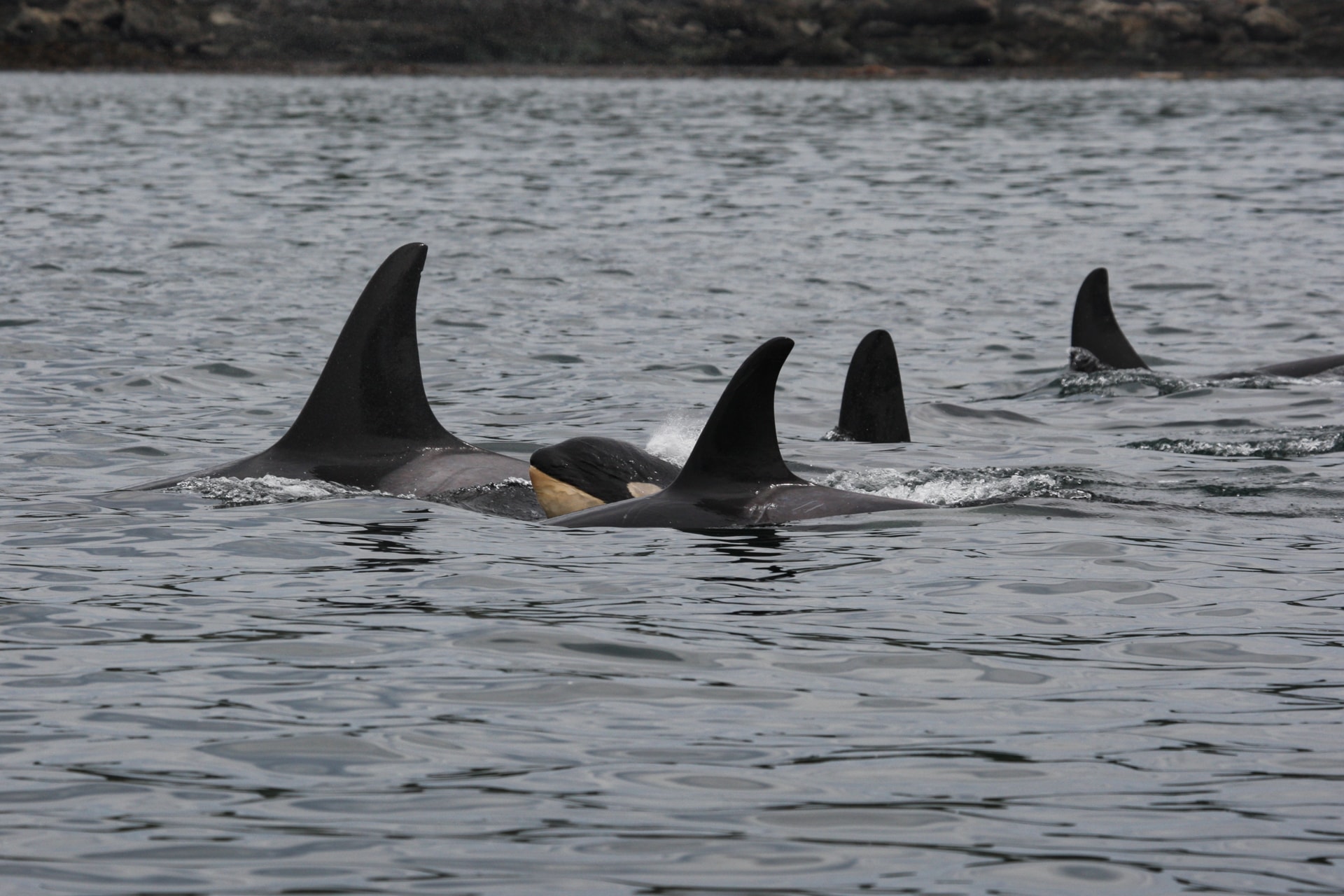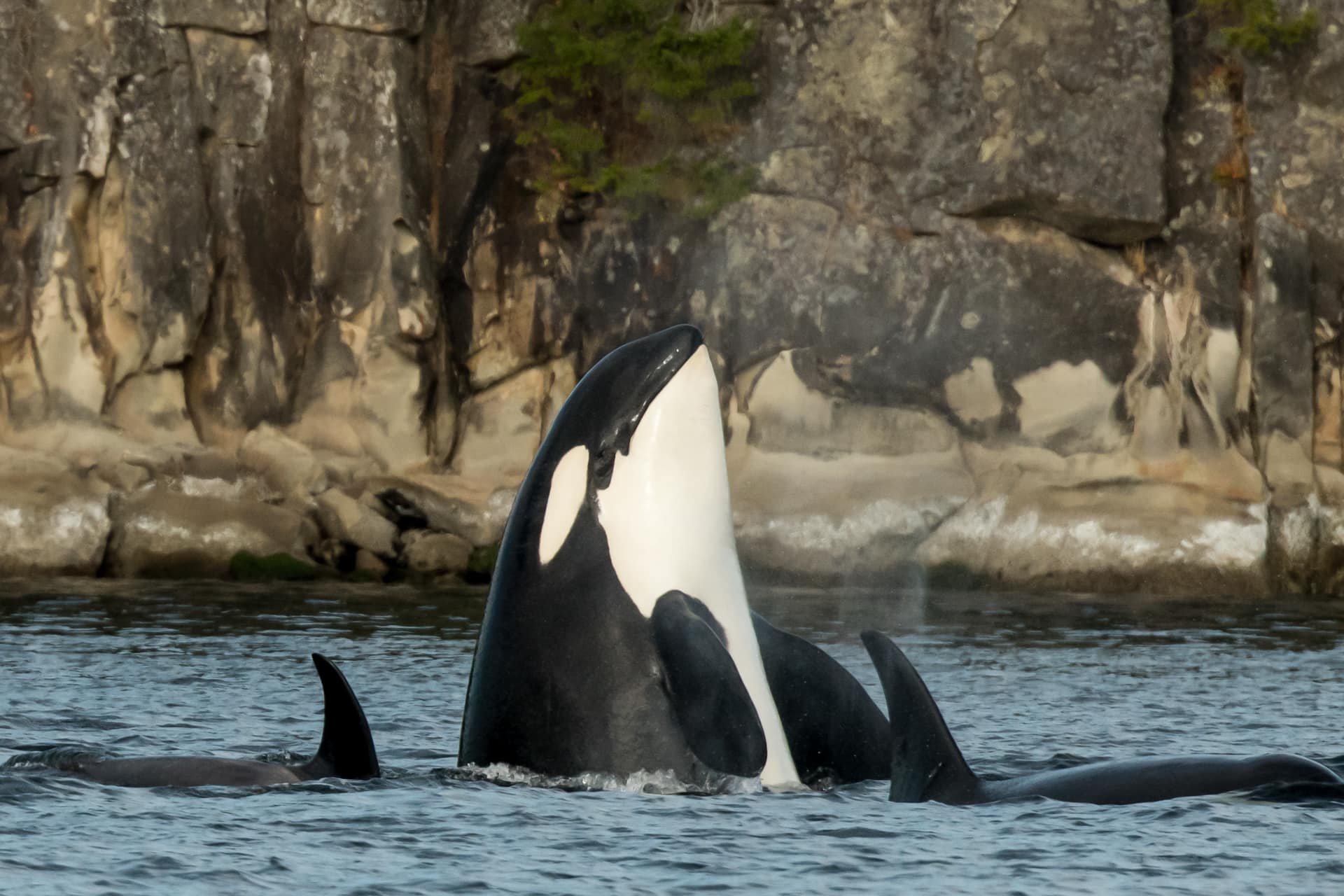
In May 2021, NOAA Fisheries released a new 5-year plan, with 4 priority actions focused on vessels, prey, health, and public engagement—all to aid recovery of the Southern Resident killer whales.
Had all the past resources promised been brought to bear on their recovery, perhaps we would be in a different place today, but even by NOAA Fisheries own admission, “there has been no net gain in the population since the 1980s.”
In this new plan, (broken down in our Deeper Dive),there’s little indication of change from “business as usual”. Yet, transient killer whales that hunt marine mammals are increasing, in spite of vessels and contaminants, as their prey is plentiful.
NOAA Fisheries has a dual mandate: to protect endangered species, and sustain a viable fishery. The Department of Fisheries and Oceans Canada likewise wears both hats, but in recent years has closed some Southern Resident foraging hotspots to fishing. Yet NOAA Fisheries continues to put commercial interests first, despite nine west coast Chinook populations listed as threatened with extinction, or endangered, and the whales’ population smaller now than when listed as endangered.
Put simply, NOAA Fisheries science and decision-making are not independent.
Consequently, over the last decade, the Southern Resident population has suffered unsustainable losses of prime breeding-age animals, as well as young whales, under five years. When coupled with a 69% pregnancy failure rate, and the high death rate of newborns, their future hangs in the balance.
NOAA Fisheries’ recovery plan goal is population growth at 2.3% a year. Since 2015, the start of the previous spotlight plan, there have been 16 deaths, but only 13 births (including 3 recent calves). Thus a population decline average of 1% per year.
In 2018, under threat of legal action, NOAA Fisheries was obligated—by the Endangered Species Act—to assess whether west coast Chinook fisheries were threatening the Southern Residents’ survival. Yet NOAA Fisheries’ primary killer whale scientist was not a participant in the subsequent 18-month process.
Two recently published NOAA-funded studies were not referenced, or applied in any decision-making; despite containing evidence that countered some of the discussion—later applied in decisions—downplaying the connection between Chinook abundance and whale health: citing lack of evidence for the importance of particular Chinook populations, as well as suggesting Chinook’s importance, “varies through time as other unanalyzed threats increase or decrease.”
Yet several other peer-reviewed publications have concluded that the impacts of insufficient Chinook are wide-ranging on health and survivorship—in all age groups, and both sexes. In fact, nutritional stress is likely the primary influence on pregnancy failures, also increasing susceptibility to disease, noise, and contaminants.
Vessels: New Actions
For many years, NOAA Fisheries has focused on vessel disturbance, particularly small vessels, as the lowest hanging fruit. Although not disputed that the presence—and noise—of vessels is a disturbance to these whales, it would be much better tolerated if they weren’t nutritionally stressed.
The focus on larger vessels in this new plan is welcome, however it’s but months since NOAA authorized a 7-year extension to the Navy’s exemption from the Marine Mammal Protection Act, increasing the authorized take (harm) up to 52 of 75 whales.
Prey: New Actions
“The relative importance of specific Chinook stocks is still under investigation.”
Yet a NOAA Fisheries-funded diet study published early 2021 sheds light on this: DNA extracted from Chinook samples—consumed by Southern Residents—revealed they came from 19 different populations, from rivers from Alaska to California.
When these 19 rivers are grouped, four key sources are identified. The Columbia—historically the biggest salmon-producing river in the lower 48—is at Number. 1. Breaching Snake River dams is key to its restoration. In 2000, NOAA Fisheries agreed that removing these 4 dams was the best way to recover Chinook. But since? Silence.
It’s sad to see this plan also contains actions that will seek to lay blame on marine predators that eat salmon as a natural part of their diet (seals, sea lions, birds, even the Northern Residents), when at the root is overfishing, habitat loss, and hatcheries.
Health: New Actions
The new plan supports collecting more samples to determine what the whales eat, when and where. Yet two of their own studies, published in 2021, provide answers: year-round reliance on Chinook; the importance of four key Chinook rivers; and the whales’ extensive use of coastal habitat, with foraging hotspots from Washington to California—especially close to river mouths.
It’s true that in recent years, the whales’ travel patterns have changed, due to decreasing Chinook abundance in the Salish Sea. However, it’s undisputed that they preferentially feed on Chinook, even when relatively scarce compared with other prey they’re known to eat. Their habitat has not changed—only the frequency, and duration of time spent on the outer coast has increased. These foraging areas are long established as critical habitat, despite NOAA’s procrastination to finalize. How long is NOAA going to collect data, if they are not willing to take any action on it?

The Center for Whale Research began their census study in 1976.
After 40 years of research, little has persuaded NOAA Fisheries to address the underlying issue: increased access to sufficient Chinook is needed to sustain these whales—including a share of the catch, in the short term. Ongoing health monitoring is important, at the individual and population level, but a search for so-called “unanalyzed threats” is a red herring.
Malnutrition is the No. 1 threat, and it’s imperative we take the research findings already in the public domain, and demand action is taken now.
By restoring wild Chinook—with a comprehensive habitat restoration program, and sound fisheries management—we can yet save the Southern Resident killer whales, have a viable fishery, and a healthier ecosystem more resilient to climate change.
Now there’s a plan we can all sign up to.





